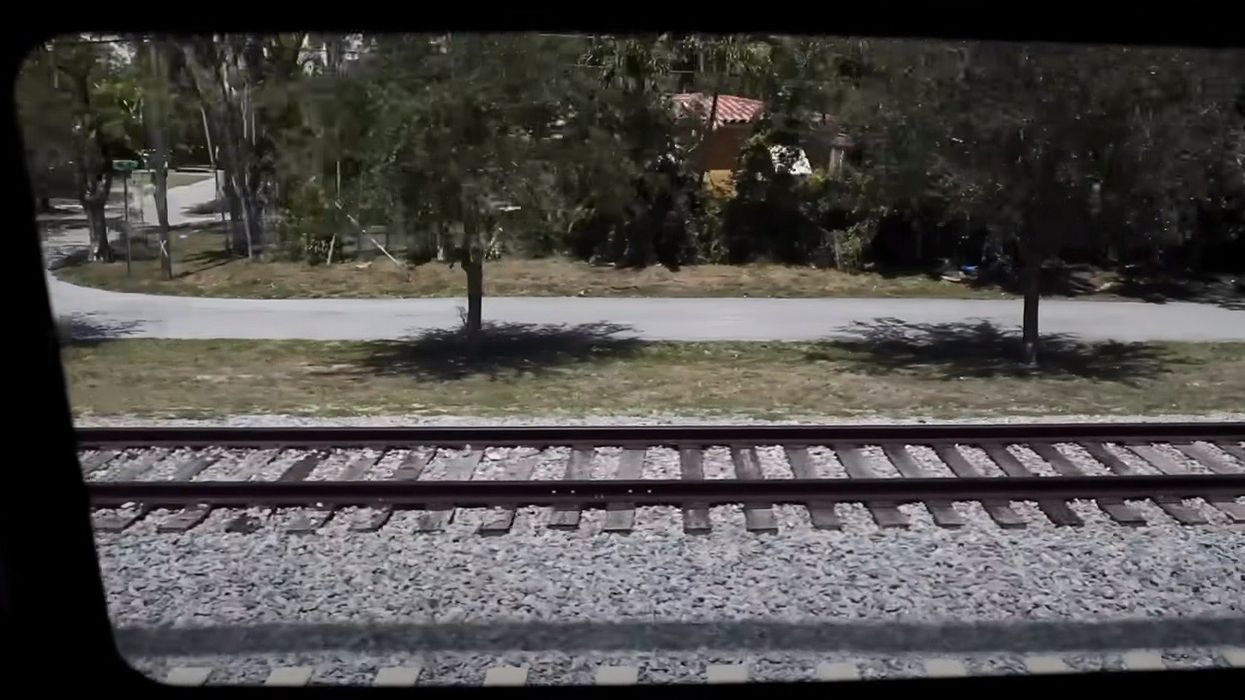How To Guarantee More Disastrous Train Wrecks
Stuff happens, right?
I mean, who could've thought that in these modern times of digital monitoring of everything, something as massive as a freight train could become a toxic fireball rolling undetected and unslowed into an Ohio town? But a Norfolk Southern train did just that, derailing in East Palestine and contaminating the air, water, land and families with tons of cancer-causing chemicals. "Gosh," exclaimed Norfolk Southern's CEO; "Gosh," exclaimed the Ohio governor; "Gosh," exclaimed the U.S. transportation chief; gosh exclaimed the GOP chair of the rail transportation committee — this is a terrible, unexpected accident and we're all appalled by it!
Only... all of these officials knew full well that this disaster would happen (though they didn't know exactly where). Indeed, far from unexpected, there are more than 1,000 preventable train derailments in the U.S. every year (Norfolk Southern had another only days after the one in Ohio). And these things don't just happen — they are caused by the profiteering greed of the monopolistic industry's top executives and rich investors.
While Norfolk's boardroom elites have been pocketing record profits in recent years, they've used armies of lobbyists and multimillion-dollar political donations to kill safety protections that would prevent such a disastrous record. To cut costs and jack up profits, railroad bosses have rigged the rules to run trains that are absurdly long, go too fast, carry ever-heavier loads of undisclosed toxics in weak tanker cars, have no fire detectors, use outmoded braking systems — and have as few as one crew member on board. One!
Norfolk's derailed train was made to derail. It pulled 149 cars, stretching nearly two miles down the track, and it was unequipped to detect fires and other problems. This disaster was not an "accident" — it (and those that will come next) was mandated by the corporate and government officials now professing outrage.
Tracking Norfolk Southern's Derailment
"The Wreck of the Old 97" is a classic bluegrass song recounting a spectacular train crash in 1903, caused by the company's demand that the engineer speed down a dangerous track to deliver cargo on time.
One hundred twenty years later we have the "Wreck of the Norfolk Southern" — a devastating crash caused by the corporate demand that it be allowed to run an ill-equipped, understaffed, largely unregulated, 1.7-mile train carrying flammable, cancer-causing toxics through communities, putting profit over people and public safety.
This rolling bomb of a train was hardly unique, for the handful of multibillion-dollar railroad giants that control the industry also control lawmakers and regulators who're supposed to protect the public from public-be-damned profiteers. A measure of their arrogance came just two years ago, when an Ohio legislative committee dared to consider a modest proposal for just a bit more rail safety. Norfolk Southern executives squawked like Chicken Little, asserting a plutocratic doctrine of corporate supremacy on such decisions. They even imperiously proclaimed that state lawmakers have no right to interfere in safety matters.
Ohio's Chamber of Commerce dutifully echoed Norfolk's concern for profit over people, testifying that "Ohio's business climate would be negatively impacted" by the bill. Never mind that Ohio's public safety climate can literally be "negatively impacted" by train wrecks! Plunging deeper down the autocratic rabbit hole, the Chamber insisted that corporate control over workers is sacrosanct. It postulated that a crew-safety provision in the Ohio bill is illegal because it "would interfere with the employment relationship between employers and their employees." Yes, that's a corporate claim that executives have an inalienable right to endanger workers.
Sure enough, bowing to the corporate powers, Ohio lawmakers rejected the 2021 safety bill. And that, boys and girls, is why train catastrophes keep happening.
Reprinted with permission from Creators.




